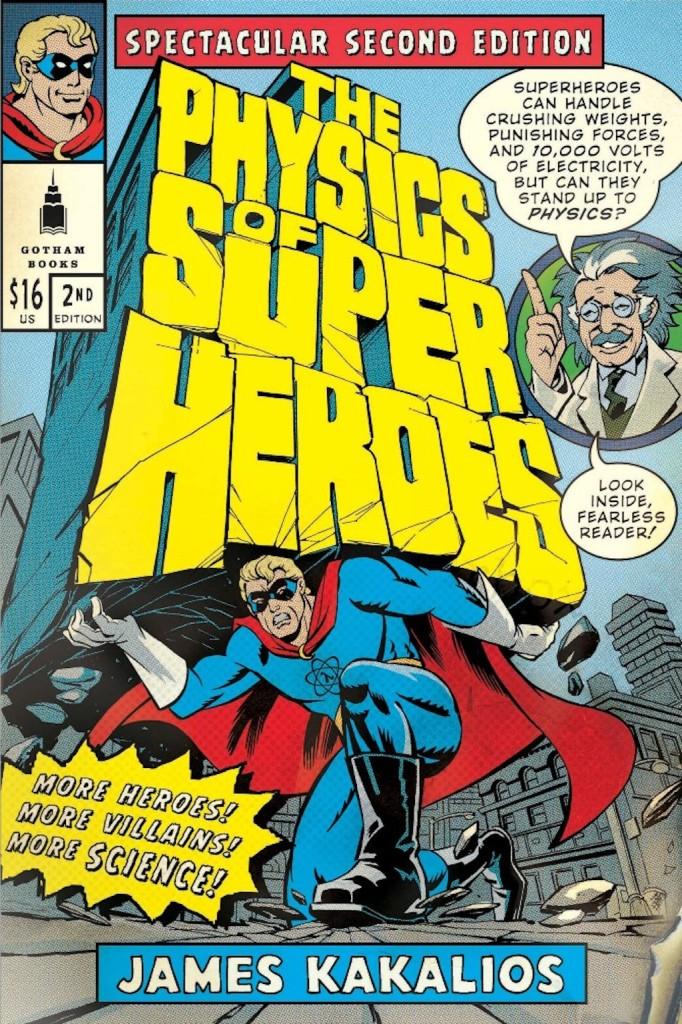One of the most famous moments in the comic book superhero world is the death of Gwen Stacy, Spider-Man’s oft-forgotten first girlfriend. The Green Goblin, Spider-Man’s arch nemesis, has cornered Gwen on a bridge in an attempt to lure Spider-Man there, when she is hurled off the side by the Goblin. Spider-Man, in an attempt to save her, shoots out his web and halts her fall, but when he reels her up, Spider-Man finds that his girlfriend has already died. The Green Goblin cackles: “Romantic idiot! She was dead before your webbing reached her! A fall from that height would kill anyone, before they struck the ground!” Through the years, the Spider-Man fandom has fiercely debated this claim. Many have argued that Spider-Man’s webbing could have actually killed her; it stopped her fall so abruptly that she snapped her neck. However, for the longest time, the question remained unanswered: did the webbing kill Gwen Stacy, or did the fall?
On the 25th of October, the Berkeley Carroll School had the honor of hosting Professor James Kakalios, a physics professor from the University of Minnesota, as he conducted a talk on ‘The Physics of Superheroes’. His book, with the same enticing name, brilliantly combines physics with comic book superheroes, an endeavor that began with one of his Physics classes, entitled: Everything I Know About Physics I Learned From Comic Books. While suspending disbelief in the existence of superheroes, Professor Kakalios provides scientific grounds for the feats of these comic book icons. The punster, writer and physicist had this to say about the death of Gwen Stacy: “I proved in my book, with simple physics, that it was the webbing and not the fall that killed Gwen Stacy.” Using Newton’s Second Law of motion, he says, the scenario makes sense. As Gwen Stacy was falling, her momentum – the product of her velocity and her mass – was rapidly increasing, and the sudden halt to her downward velocity caused by the webbing snapped her neck. It was never the fall; “The Goblin was wrong!” exclaimed Professor Kakalios.
Berkeley Carroll students were understandably apprehensive about a physics-centric talk, but for many, their interest heightened when they found out that it was physics in terms of comic book superheroes. Junior Callie Goodin articulated this sentiment following Professor Kakalios’ talk: “His lecture was really cool,” she muses. “I think it’s great that he’s able to teach material many students feel is dry and inaccessible in a really interesting and exciting way. Anything can be fascinating if you look at it from the right mindset (whatever that mindset is for you).” Caleb Gordon, a senior and an avowed fan of any union between science and literature had this to say about Professor Kakalios’ talk: “I thought Professor Kakalios was a really engaging speaker. He obviously knew his stuff, but he was also a really fun and funny guy. I mean, he had the audience cracking up during a physics lecture.” Like I said, punster. Mr. Scott Rubin, physics teacher and head of the Science department at Berkeley Carroll was especially excited about Professor Kakalios’ visit and encouraged everyone to take his book home and read it, “The great thing about Physics is that it is full of fantastic possibilities – from time travel to teleportation,” said Mr. Rubin. “I thought Dr. Kakalios brought that out really well.”
Professor Kakalios, aside from writing fascinating interdisciplinary books and wielding a wealth of information about comic book characters in books and movies, is also a Physics professor. He is known for his work with complicated, but undoubtedly fascinating, areas of study such as amorphous semiconductors and 1/f noise. Ben Schmidt, a senior who introduced Professor Kakalios before his talk, was impressed with the breadth of study that this physicist had tackled in the mere span of fifty minutes. “[The presentation] covered a wide range of basic physics using examples from superheroes such as Flash and Spider-Man. It even included an interesting detour into the physical wonders of sand, how it acts as both a liquid and a solid.” Needless to say, the entire Berkeley Carroll community was impressed with Professor Kakalios as well; this one, bespectacled man sporting a Spider-Man tie had replaced the well-known fear of Physics with the marvels of the comic book universe. He even asked the students to reconsider what they saw at the movies, and think of it in terms of Physics. “I asked a question about Iron Man,” Caleb remembers. “He made me lose a smidgen of my respect for the Iron Man trilogy, and if that’s not something, I don’t know what is.”

